Understanding Customer Churn Rate: A comprehensive tutorial for businesses
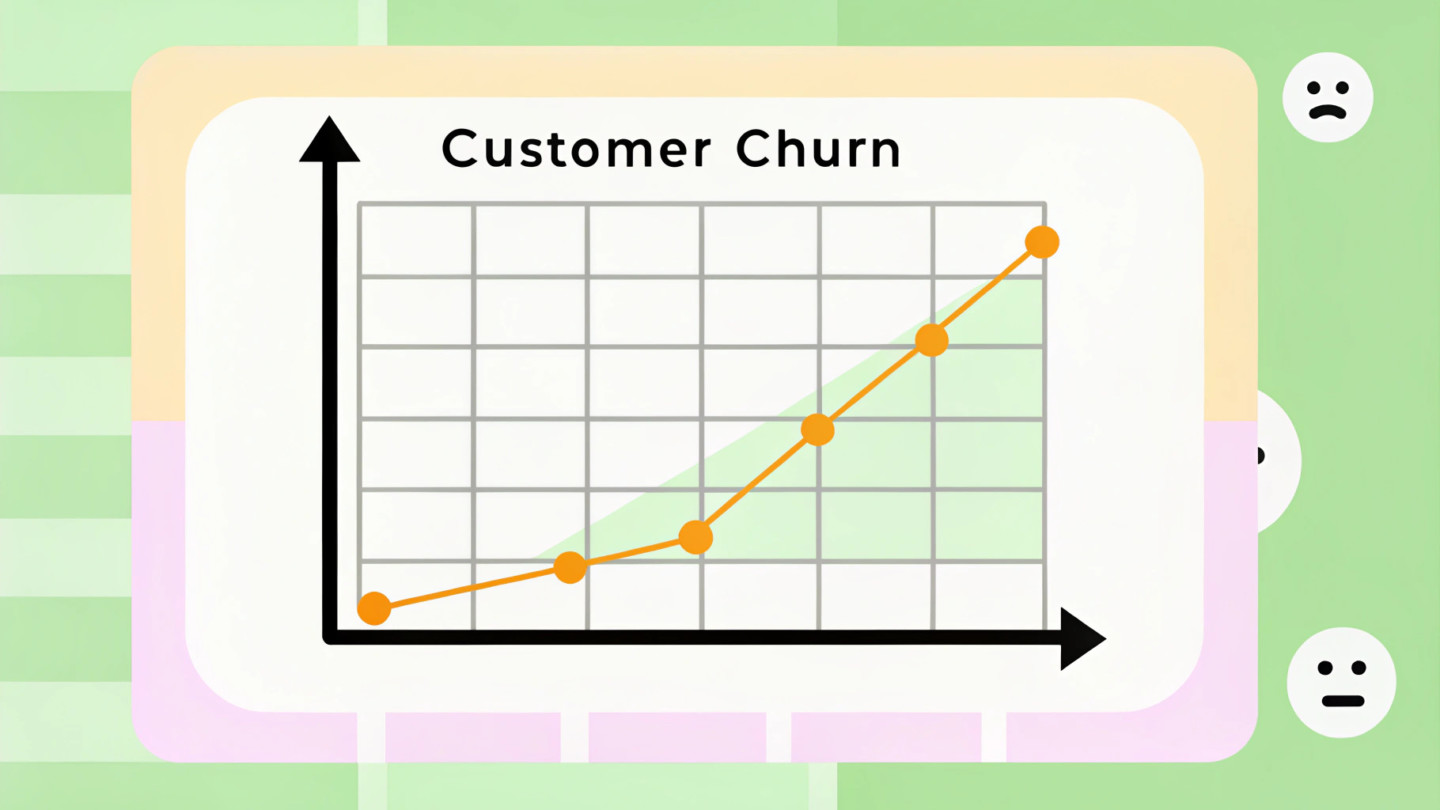
Introduction
Customer churn rate is a critical metric that can significantly influence a business’s success. It reflects the percentage of customers who terminate their relationship with a company over a defined period, providing essential insights into customer satisfaction and loyalty.
Understanding and accurately calculating this rate is vital for organizations aiming to improve their retention strategies and drive growth. With a staggering percentage of customers expecting timely resolutions to their issues, businesses must prioritize effective customer service to mitigate churn.
This article delves into the intricacies of customer churn, exploring its causes, the importance of measurement, and actionable strategies to enhance retention and ultimately bolster profitability.
Defining Customer Churn Rate: What every business should know
Attrition percentage is a critical metric for any business. It tells you how many clients decide to part ways over a specific period. To calculate it, take the number of clients lost and divide that by the total number of clients at the start. This number isn’t just a statistic; it’s a window into client satisfaction and loyalty, and it reflects how well your company is delivering on its promises.
Consider this: around 44% of clients expect companies to respond to their issues quickly and effectively. That’s a significant number. It underscores the need for efficient service if you want to keep your clients around. As CallMiner points out, “approximately 44% of clients desire organizations to ensure that service and support teams address their issues effectively and efficiently.” If your turnover rate is high, it’s a red flag. It suggests there are deeper issues at play that could jeopardize your organization’s health and growth. Companies need to keep a close eye on these retention metrics.
Here’s a sobering fact: only 1 in 26 unhappy clients will voice their complaints. The majority will just walk away, leaving you in the dark. This makes it essential for businesses to regularly evaluate and improve their retention strategies. A case study titled “Lack of Measurement in Retention Statistics” drives this home. Despite the clear importance of client retention, 44% of firms don’t even track their retention figures. If you want to succeed, measuring client retention isn’t just important; it’s imperative.
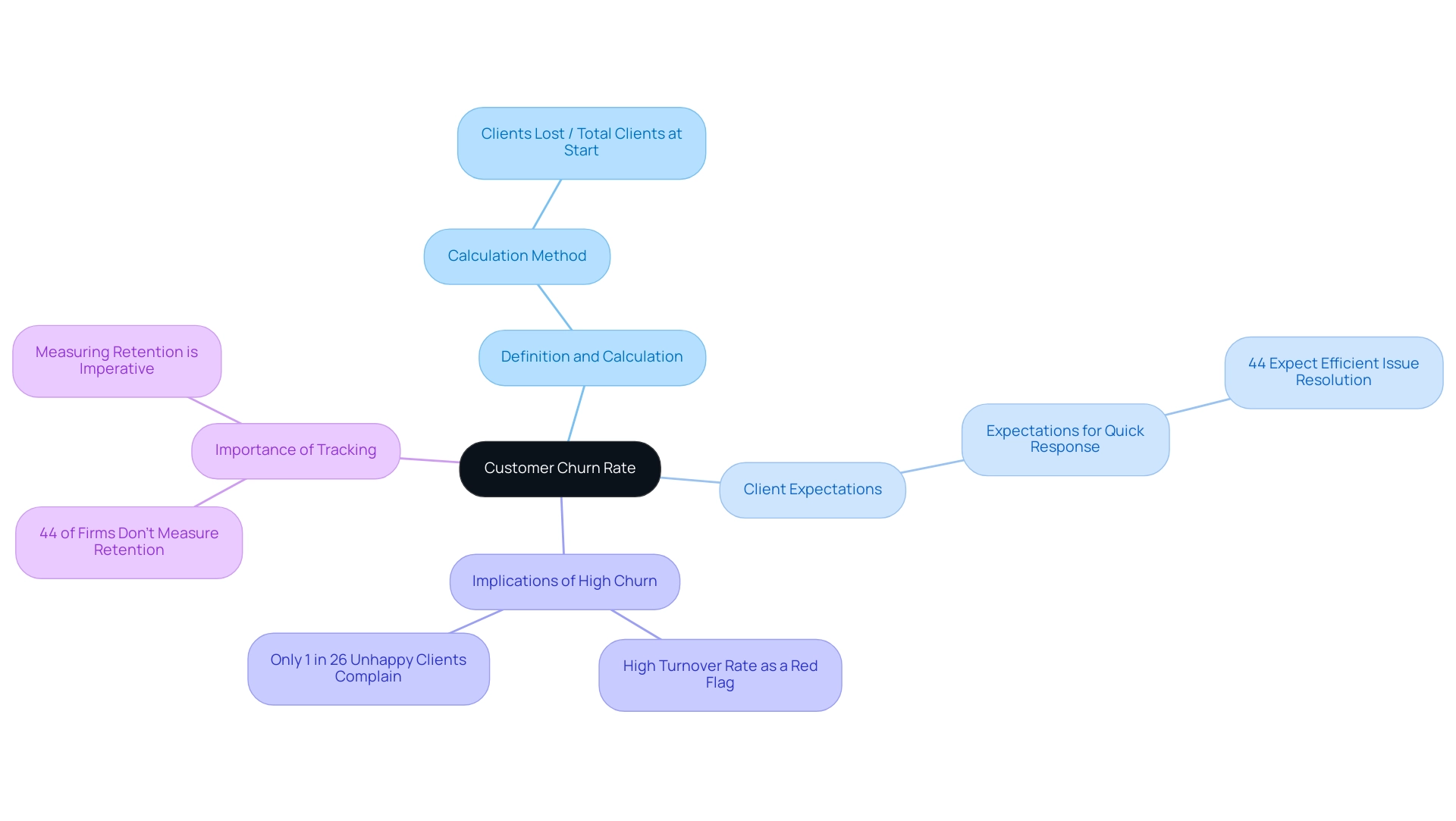
The importance of measuring Customer Churn Rate for business success
Customer churn rate is a critical metric for any business aiming for success. It gives you a clear view of customer behavior, satisfaction, and how well your marketing strategies are performing. In simple terms, churn rate measures the percentage of customers who stop using your product or service over a specific period. By keeping a close eye on this number, you can make smarter decisions about how to retain clients and allocate your resources effectively.
Let’s break it down further. Research shows that referrals from loyal customers can yield a 16% higher lifetime value. That’s not just a number; it’s a clear financial incentive to keep your customers happy. When you notice a drop in user activity, it’s a red flag. It often means that customers who were once engaged might be on their way out. This is why you need to monitor usage patterns proactively. Catching these signs early can help you address potential churn and improve customer satisfaction before it’s too late.
Now, here’s a stark reality: 85% of customers don’t respond to standard dunning emails about payment updates. That’s a huge challenge for businesses trying to keep clients on board. As Casey Graham, CEO, points out, there’s a way to recover from failed payments and help your business reclaim what it’s owed while also boosting lifetime value. Understanding customer churn isn’t just about keeping score; it’s about enhancing your service and product offerings, increasing profitability, and gaining a competitive edge in the market.
In short, if you want to thrive, you need to keep your finger on the pulse of your customer churn rate. It’s not just a number—it’s a vital sign of your business health.
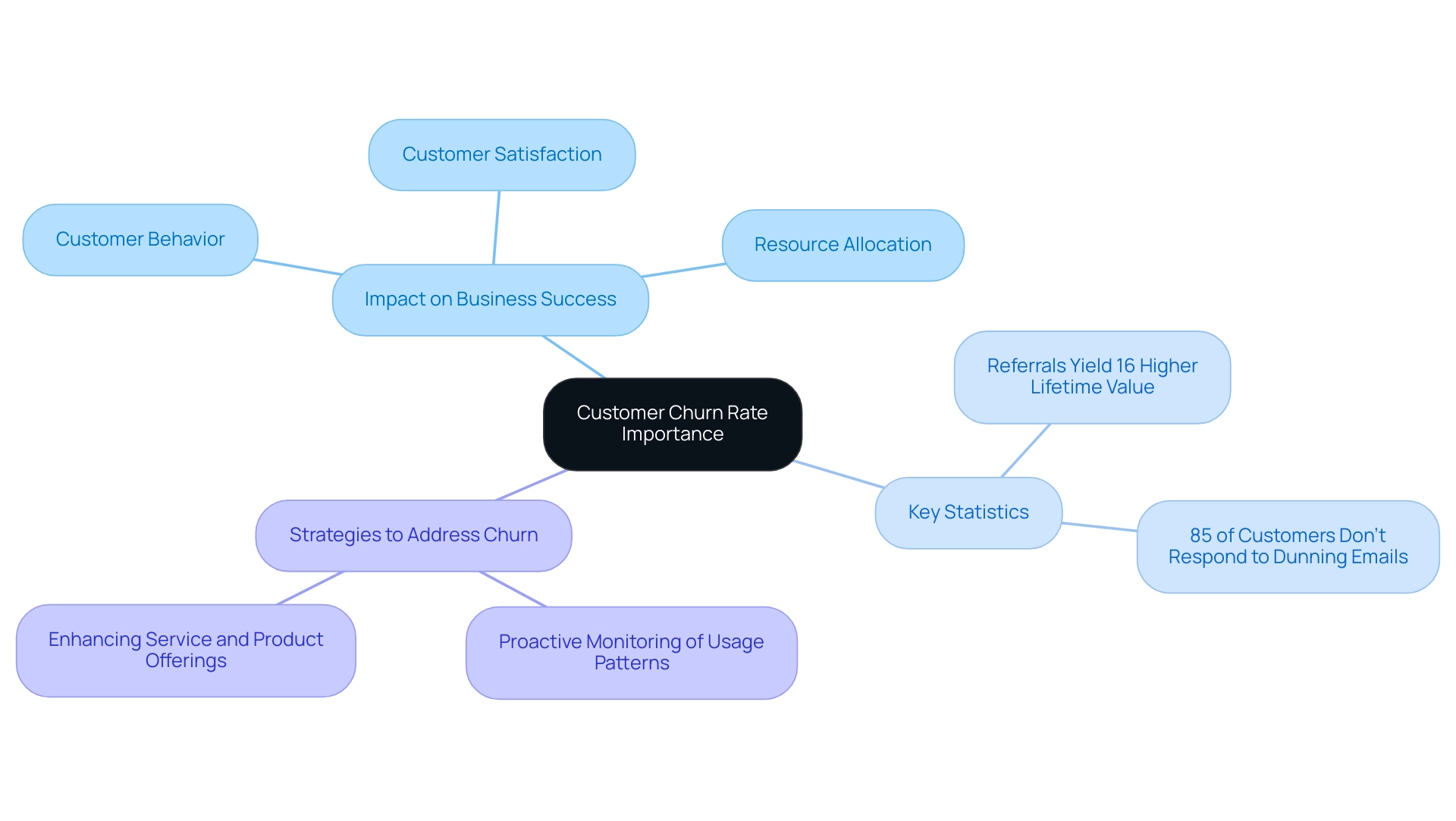
How to accurately calculate Customer Churn Rate
Calculating client turnover rate isn’t just a numbers game; it’s a critical skill for any business. Here’s how to do it right:
Choose your timeframe: Decide if you want to look at churn monthly or annually. This choice sets the stage for your analysis.
Count your starting clients: Take note of how many clients you had at the beginning of your selected period. This is your baseline.
Track lost clients: Identify how many clients you lost during that timeframe. This is where the rubber meets the road.
Use the Churn formula: Here’s the formula you need:
Churn Rate = (Customers Lost / Total Customers at Start) × 100
Let’s say you started with 1,000 customers and lost 50. Your churn rate would look like this:Churn Rate = (50 / 1000) × 100 = 5%
Now, if your monthly recurring revenue (MRR) is $100,000 and you lose $5,000, that translates to a gross revenue churn rate of 5%. This isn’t just a number; it’s a vital sign of your business health.
Regularly assessing your customer churn rate is crucial. It helps you spot trends and adjust your strategies accordingly. Remember, when calculating attrition, don’t mix in new sales. Doing so will only skew your numbers and give you a false sense of security about your client retention.
Effective churn management can lead to substantial gains. Take Recurly’s approach, which aims to cut involuntary churn to 1% and increase subscription revenue by 11% month over month. As Casey Graham, CEO, emphasizes, tackling issues like failed credit card payments is essential for recovering lost revenue and boosting customer lifetime value.
In the end, rigorous churn analysis isn’t just a nice-to-have; it’s a necessity. It strengthens your financial footing and paves the way for sustainable growth. Just look at the successful subscription-based companies — they know their numbers, and they act on them.

Understanding the causes of Customer Churn: Voluntary vs. involuntary
Customer attrition isn’t just a number; it’s a story of two distinct types: voluntary and involuntary. Voluntary attrition is when customers decide to leave on their own. They might be unhappy with the product, the service, or simply feel they’re not getting their money’s worth. On the flip side, involuntary attrition happens due to factors outside of the customer’s control — think billing errors or a company shutting down operations.
Understanding these dynamics is crucial for any business. It’s like having a map before you embark on a journey. Knowing why customers leave helps you craft strategies that boost satisfaction and cut down on churn.
Let’s get into the data. Analyzing customer cohorts is a smart move. It allows you to track how subscriber behavior shifts over time. This insight is vital for tailoring your interventions. Take the case study “Actionable Insights to Reduce Attrition.” It shows how businesses have pinpointed the reasons behind both voluntary and involuntary losses. By employing a two-pronged strategy focused on understanding these causes, companies can design targeted processes that effectively tackle churn.
The numbers speak volumes. Recently, 44.1% of businesses reported a drop in voluntary attrition rates compared to the previous year. That’s not just luck; it’s the result of deliberate, focused efforts. For example, enhancing customer support can significantly lower voluntary attrition by directly addressing issues that matter to clients. Additionally, improving the overall customer experience and actively seeking feedback can make a big difference.
Now, let’s talk about involuntary attrition. Streamlining billing processes is a game changer. Casey Graham, CEO, emphasizes the importance of resolving failed credit card transactions. He puts it plainly: “…how we can assist you in recovering what is owed and enhancing lifetime value.” This two-pronged approach not only fosters loyalty among existing customers but also stabilizes revenue in the long run.
In summary, tackle the reasons behind attrition head-on. Understand your customers, improve their experience, and keep your billing in check. That’s how you turn potential losses into lasting relationships.
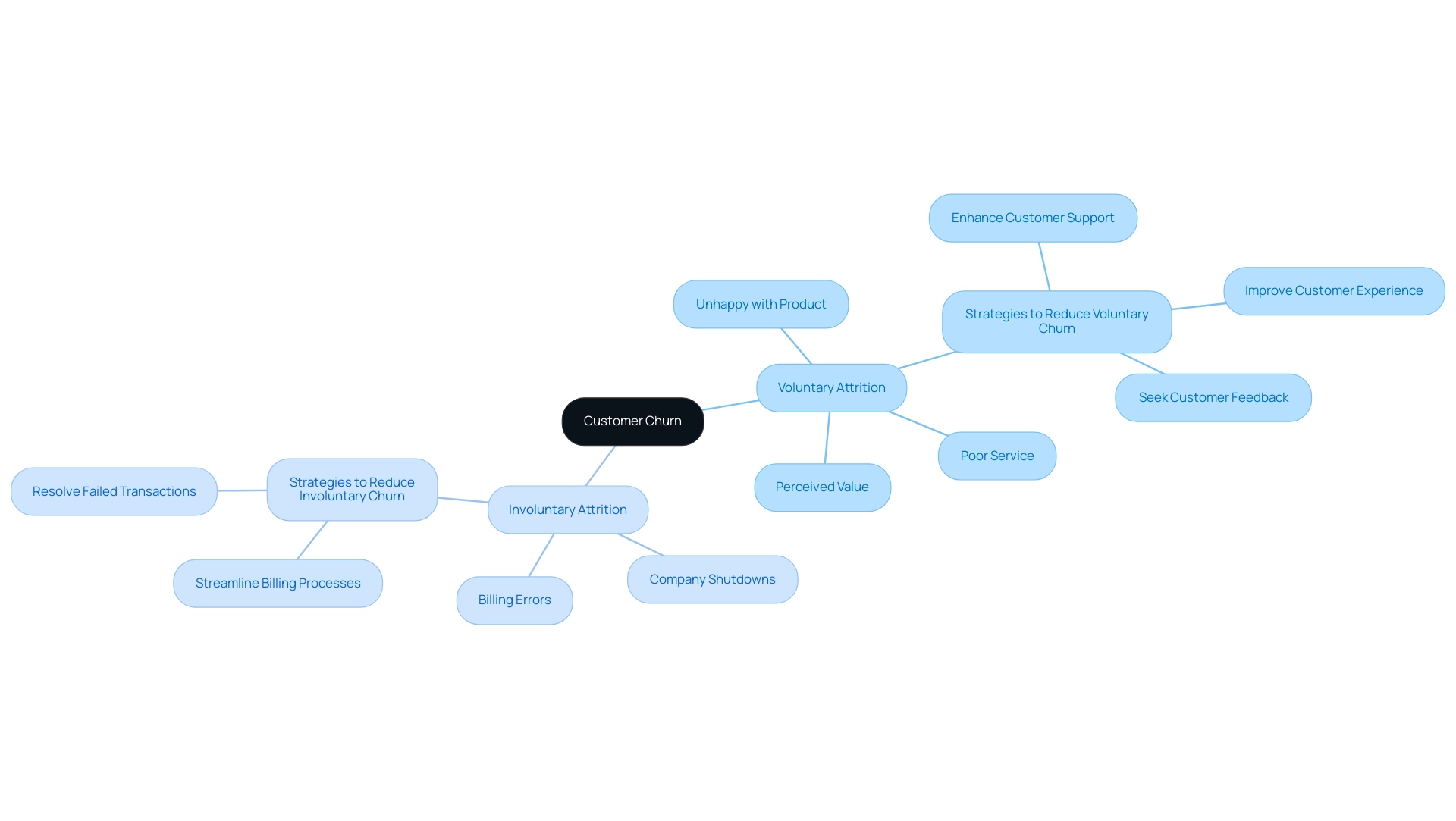
Effective strategies to reduce Customer Churn and enhance retention
Customer churn is a silent killer in business. If you’re not actively working to keep your customers, you’re losing them. Here’s how to turn the tide and boost retention:
Engage your clients: Communication is key. Send personalized emails, newsletters, and feedback requests. Make your clients feel valued. When they know you care, they stick around.
Automate follow-ups: Use automation tools to send follow-up messages after a purchase or interaction. This simple act shows your clients they matter. It strengthens their bond with your brand.
Deliver top-notch service: Your support staff needs the right training. Equip them to resolve issues quickly and effectively. A satisfied client is a loyal client.
Listen to feedback: Collect and analyze client feedback systematically. This isn’t just about gathering data; it’s about understanding where you can improve. Adapt to meet your clients’ needs.
Create loyalty programs: Reward repeat purchases. Loyalty programs not only keep customers engaged but also deepen their relationship with your brand. Take a page from Nextiva, which uses advanced analytics and AI to create outstanding client experiences.
These strategies have proven effective in reducing churn and driving growth. The link between client engagement and retention is clear.
To measure your success, calculate your churn rate. Divide the number of clients lost during a certain period by the total number of clients at the start of that period. This simple metric can provide powerful insights.
And don’t overlook the importance of addressing issues like failed credit card transactions. As Casey Graham, CEO, points out, tackling these problems can help recover lost revenue and enhance lifetime value.
By implementing these strategies, you can transform customer experiences and significantly reduce churn. Insights from experts like Gravy on subscription payment failures can guide you in this journey. Remember, keeping your customers is just as crucial as acquiring new ones.
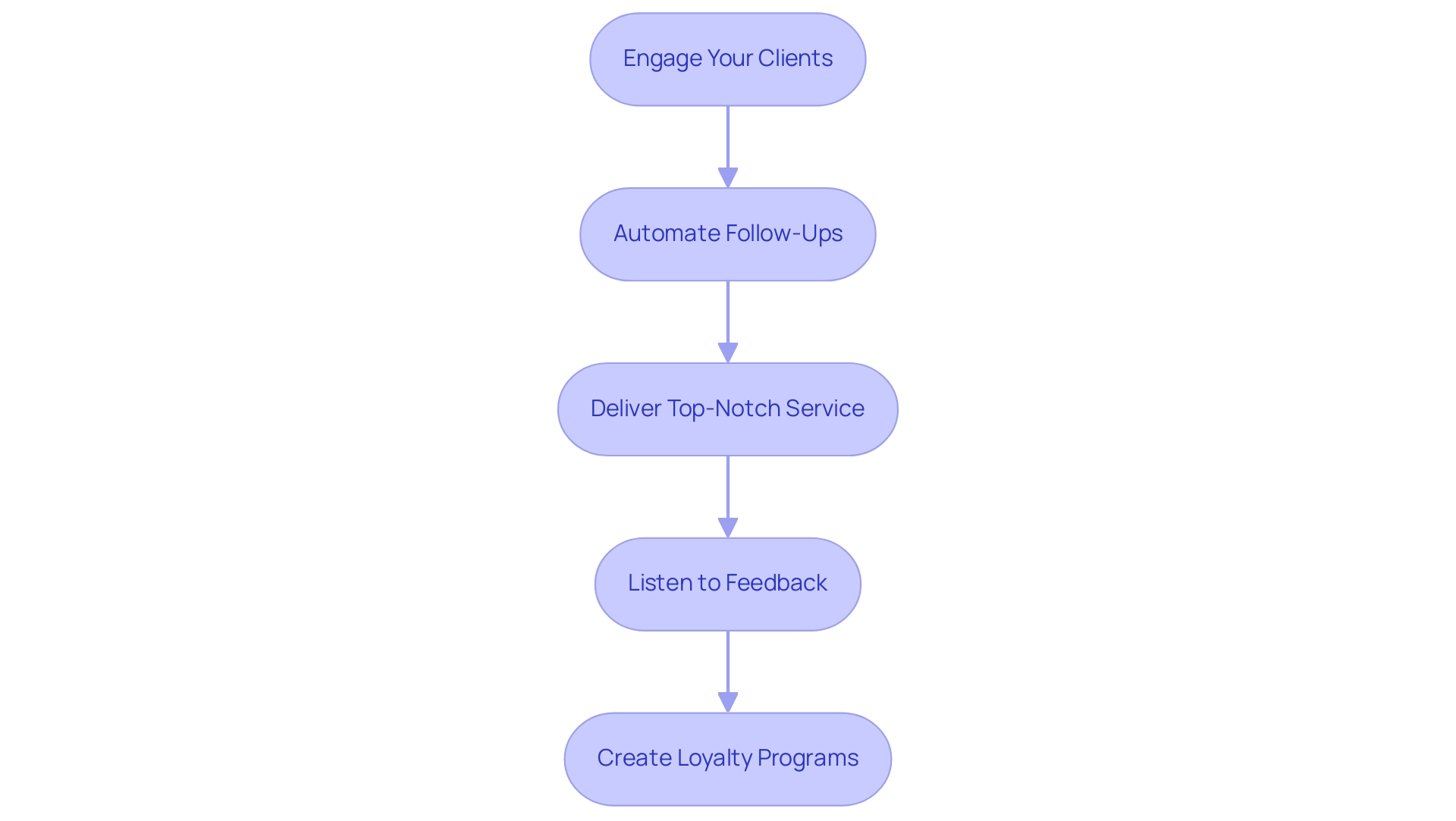
Conclusion
Understanding and managing customer churn is essential for any business aiming for sustained success. The churn rate, which measures the percentage of customers who discontinue their relationship with a company, serves as a critical indicator of customer satisfaction and loyalty. By accurately calculating this metric, businesses can glean valuable insights into their service effectiveness and customer engagement levels.
The importance of monitoring customer churn cannot be overstated. Organizations that actively track and analyze churn data can identify trends, adapt their strategies, and allocate resources effectively to enhance customer retention. Addressing both voluntary and involuntary churn through targeted interventions—such as improving customer service and streamlining billing processes — can significantly reduce turnover rates and foster loyalty.
Implementing effective retention strategies, including personalized customer engagement and loyalty programs, can create a more satisfying customer experience. Such initiatives not only help in retaining existing customers but also contribute to long-term profitability and competitive advantage. Ultimately, prioritizing customer satisfaction and proactively managing churn will empower businesses to thrive in an increasingly competitive landscape. Taking these steps is not just a strategy for survival; it is a pathway to growth and success in today’s dynamic market.




![The ultimate guide to growth marketing in 2023 [explained by a growth hacker]](https://www.dashly.io/blog/wp-content/uploads/2023/04/The-ultimate-guide-to-growth-marketing-explained-by-a-growth-hacker-720x317.png)
![4 steps as Chief Marketing Officer at a new company [Expert guide]](https://www.dashly.io/blog/wp-content/uploads/2022/10/4-steps-as-Chief-Marketing-Officer-at-a-new-company-Expert-guide-720x317.jpg)

![10-step Guide on How to Create a Chatbot for your Website [Build without code]](https://www.dashly.io/blog/wp-content/uploads/2022/06/How-to-create-a-chatbot-to-automate-conversations-with-your-website-visitors-720x317.png)